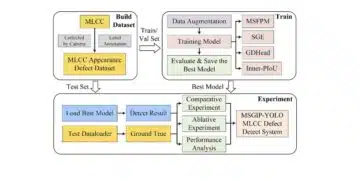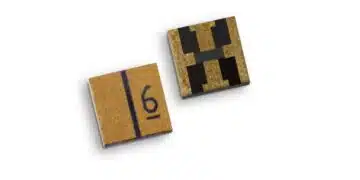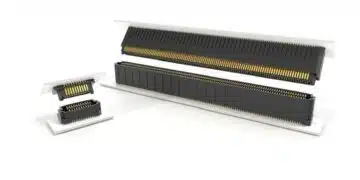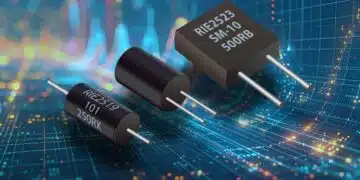The new KYOCERA AVX 9159-800 Series dual-entry vertical card-edge connectors offer its lowest above-board height profile and provide customers in the automotive, transportation, industrial manufacturing, consumer electronics, and white goods industries with space savings, flexibility, and high-reliability performance.
KYOCERA AVX, a leading global manufacturer of advanced electronic components engineered to accelerate technological innovation and build a better future, expanded its line of vertical card-edge connectors with the release of the new 9159-800 Series dual-entry card-edge connectors — the industry’s first dual-entry card-edge connectors and the lowest-profile card-edge connectors in the KYOCERA AVX portfolio.
Engineered to satisfy growing cross-market demand for card-edge connectors and persistent cross-market demand for compact, space-saving connectors, the new 9159-800 Series dual-entry card-edge connectors have a novel, compact form factor equipped with 4–20 of the company’s field-proven, high-strength beryllium copper compression contacts arranged in two rows with a tight 1mm pitch.
The series’ gold-plated compression contacts enable easy, solderless installation and exhibit excellent current-carrying capacity for their size — up to 2A per contact. They also exhibit low contact resistance and deliver high-reliability electrical and mechanical performance ideally suited for use in harsh environments. In addition, the series’ unique design supports both top- and bottom-entry mating configurations to deliver broad application suitability and recessed through-board mounting to deliver the industry’s lowest above-board height profile — just 3.5mm.
Ideal applications for these small-form-factor, dual-entry, vertical card-edge connectors extend throughout the automotive, transportation, industrial manufacturing, consumer electronics, and white goods industries and include automotive infotainment systems and body electronics, automation equipment, sensors, light curtains, smart home systems, and major appliances.
The new 9159-800 Series dual-entry card-edge connectors have white, glass-filled, high-temperature, flame retardant (UL94 V-0), and halogen-free insulators equipped with stop shoulders to ensure proper pad positioning and 4–20 high-strength gold- and tin-over-nickel-plated beryllium copper compression contacts rated for up to 2A per contact and 50-cycle durability. They’re rated for up to 150VACRMS or the DC equivalent and operating temperatures extending from -40°C to +125°C and designed to mate with 1.6mm-thick PCBs with gold-plated pads, provided that they’re not metal core PCBs. They are also UL and RoHS compliant and supplied on tape and reel packaging for automated processing.
“We are thrilled to extend our vertical card-edge connector product portfolio with the addition of the new 9159-800 Series dual-entry card-edge connectors,” said Marc Actis, Senior Marketing Manager – Interconnect, KYOCERA AVX. “Our card-edge connector products are backed by decades of cutting-edge research and development and field-proven performance in a wide variety of applications extending throughout multiple industries. Over the last five years, we’ve seen growing interest in card-edge connectors from customers in multiple industries, and this latest addition to our portfolio offers these customers an unbeatable combination of space savings, flexibility, and performance.”

































